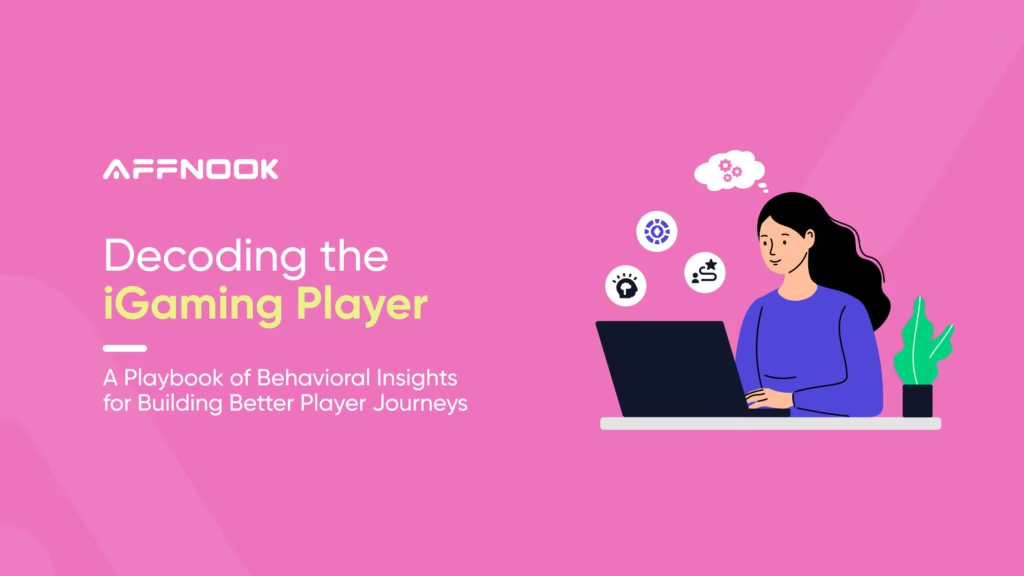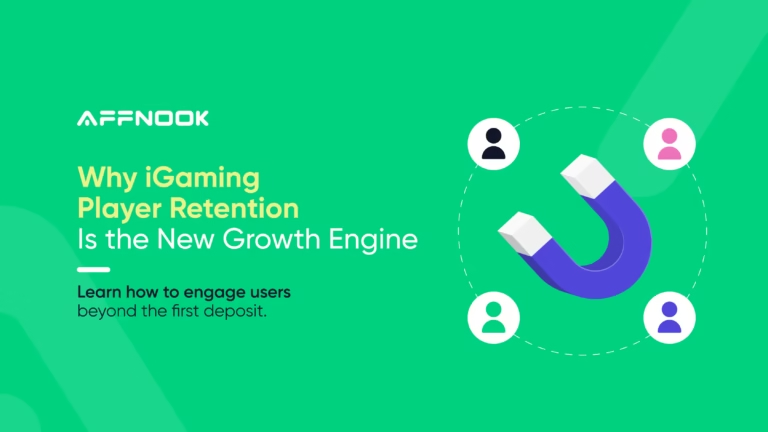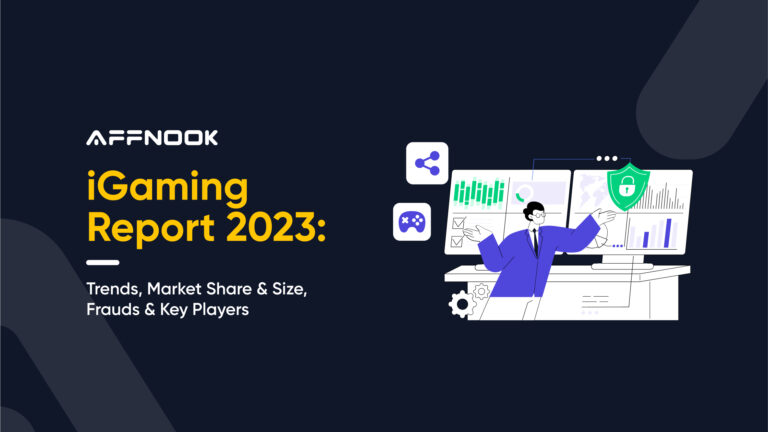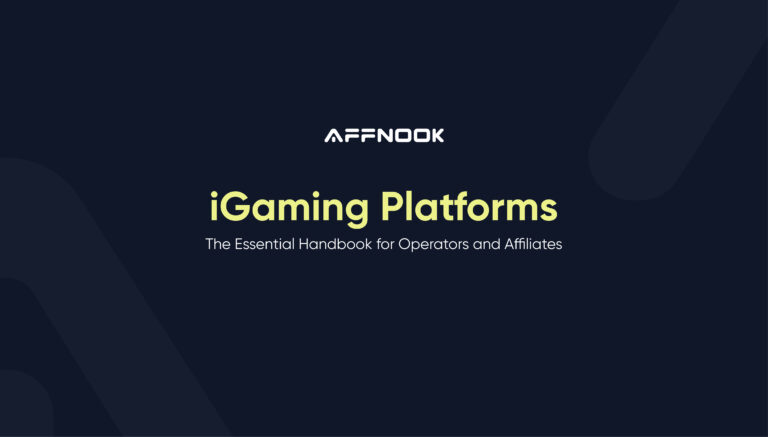The modern player in iGaming is not merely motivated by fortune—they are motivated by feelings, routine, and behavioral cues. Whether pursuing jackpot euphoria or a brief distraction, the journey of each player is shaped by subtle behavioral trends.
These motivations are vital to brands and operators. Why? The future of iGaming does not only concern attracting traffic, but also retaining players in a seamless yet ethical way.
In this guide, we unlock the iGaming user in terms of emotional, cognitive, and behavioral levels. We’ll cover:
- What motivates player choice.
- The influence of emotion, such as uncertainty and reward anticipation, on retention.
- How segmentation and personalization can increase outcomes.
With the global iGaming industry, specifically the online gambling space, projected to break the $127 billion mark by 2027, behavioral insight is no longer a nice-to-have capability—it is a competitive edge.
The Thrill of Uncertainty: Dopamine & Randomness
Why It Matters
The iGaming player is not really after rewards alone; they are after the buzz of not knowing what comes next. They are kept involved by the anticipation rather than the end result.
The Science Behind It
When the payoff is random (such as when spinning a slot machine or when a treasure drop occurs), the brain gives out a chemical called dopamine, a feel-good chemical.
However, here’s the catch: maximum release of dopamine occurs before the final outcome, when the suspense builds up. This could turn the uncertainty into a gambling addiction.
To iGaming operators, this is not a neuroscience footnote, but a behavioral insight. The feeling of euphoria produced in the anticipating phase can keep the players focused, yet leaves them exposed. Being aware of this response will allow you to build more fun but ultimately responsible experiences, where player enjoyment is in line with the long-term trust in your platform.
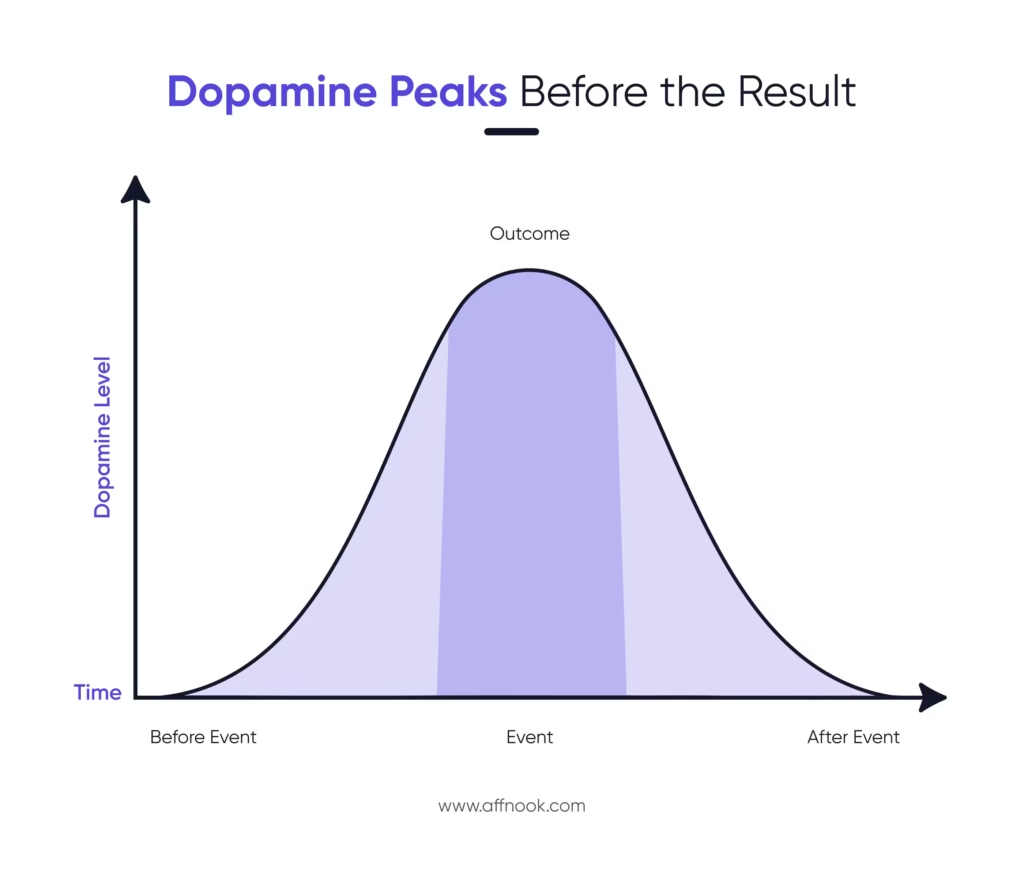
Create Game Design Mechanics That Hook
By determining psychological motivations behind player behavior, you can create more compelling, as well as addictive, experiences.
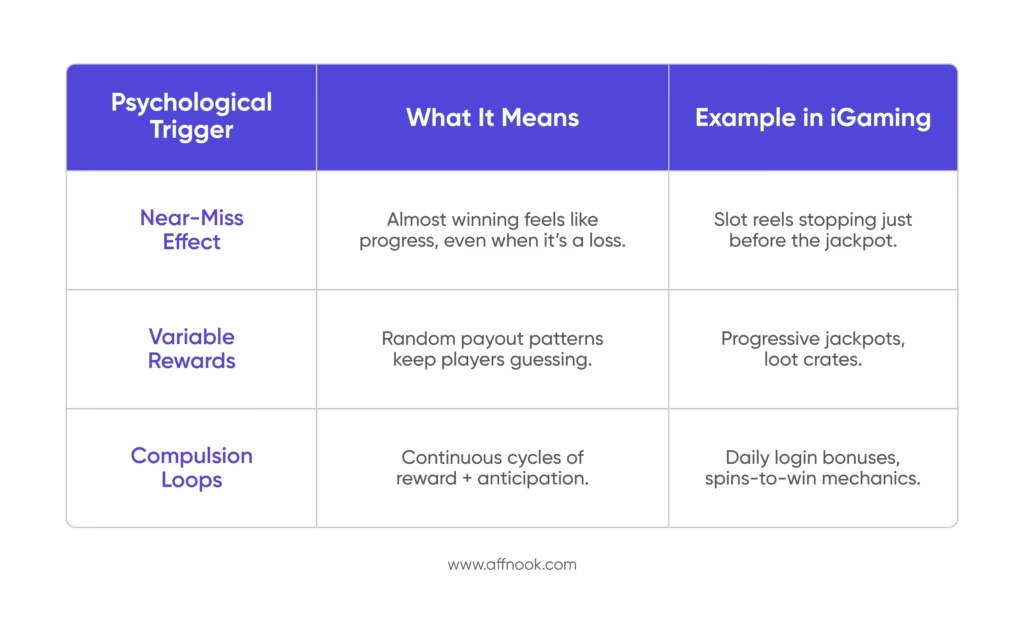
These characteristics result in craving loops toward longer sessions and recurrent returns, which are significant behavioral statistics in affiliate campaigns.
Brand Takeaway
If you’re a brand or an operator, it is important to understand the psychology behind these mechanics. It enables:
- Creating stronger player experiences.
- Releasing affiliate promotions at a time of high-dopamine windows.
- Segmentation of iGaming users by track of reaction to randomness.
Escapism and Emotional Regulation
To most players in iGaming, gambling is not merely entertainment, but is also a psychological escape. Escapism is one of the most potent behavioural motivations, as gamers use games as a means of escaping the current state of affairs in real life, either because of boredom, stress, or emotional discomfort.
Why iGaming Players Seek Escapism
According to scientific research, such as one published in PMC in 2023, many gamers turn to iGaming as a form of emotional regulation. Whether they realize it or not, some might be using gameplay to:
- Cope with daily stressors.
- Distract from feelings of anxiety or loneliness.
- Experience a quick mood boost.
These individuals find solace in gaming, a process that psychologists refer to as gambling expectancies. This attitude of “gaming makes me feel better” may become an affirmation to repeat behavior, even though the results may not be positive.
Solutions like Affnook serve to bring this knowledge into practice, providing real-time tracking of players, segmentation, and affiliate funnel optimization built to achieve concrete outcomes.
How Brands and Operators Can Align
It is essential, as a brand or operator, to identify these emotional triggers, not take advantage of them. Rather, leverage them as a way of creating engaging, ethically responsible settings that speak to an iGaming player in their yearning to have a story, a sense of self, and a sense of emotional well-being. Make use of:
- Game topics: Fantasy, adventure, or mystery, to enable the player to escape mentally
- UI/UX messaging: Warm, friendly tones on landing pages or onboarding
- Session Management: Discourage overuse during sessions and encourage the use of breaks
The Social Player – Community, Competition & Recognition
Not every player of iGames plays to win money. Some play to be noticed. The social gaming player flourishes in settings where interaction, sporting comradeship, and a sense of community are possible.
What Drives Social iGaming Players?
The motivation of these players includes:
- Recognition: Badges, leaderboards, and special avatars
- Connection: Chat rooms, multi-player format, and team challenges
- Competition: Live tournaments and head-to-head games
Such a habit conforms to Maslow’s hierarchy, which is social belonging and esteem. These are status, relationships, and identity-conscious players in the iGaming context.
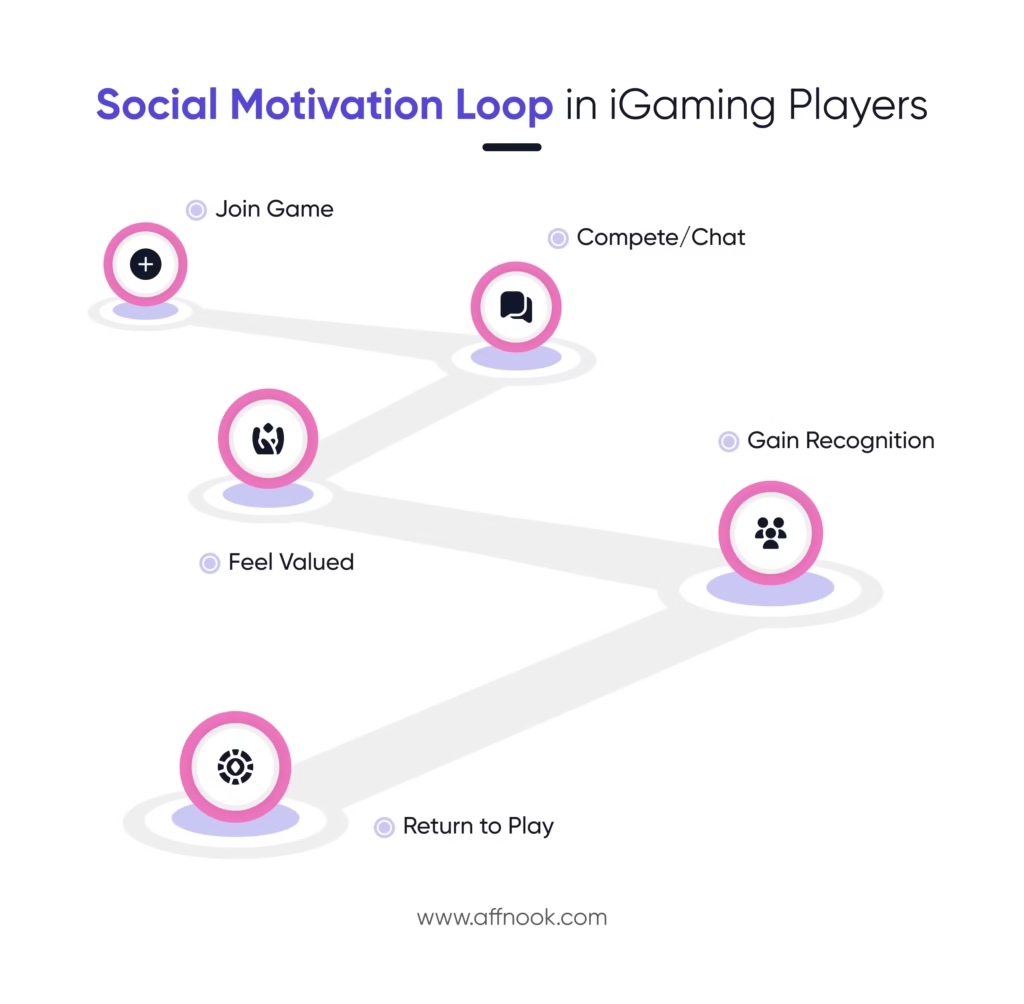
Such a circuit strengthens player engagement and stimulates repeated sessions not only with the game itself, but also with the social experience.
What Brands and Operators Should Do
To attract and retain social iGaming players, consider:
- Ranked visible VIP clubs
- Stage or tournaments where peers can interact with each other
- Community-building through in-game chat and gifting
Game Mechanics & Reward Systems
Game mechanics are not all fun, since they influence the frequency and duration that an iGaming player spends. Specifically, reward systems are significant in the reinforcement of behavior.
The basics behind making rewards effective are that they utilize the dopamine response of the brain. This has an impact on motivation, attention, and the formation of habits. And the way that reward gets presented is what makes that response so potent.
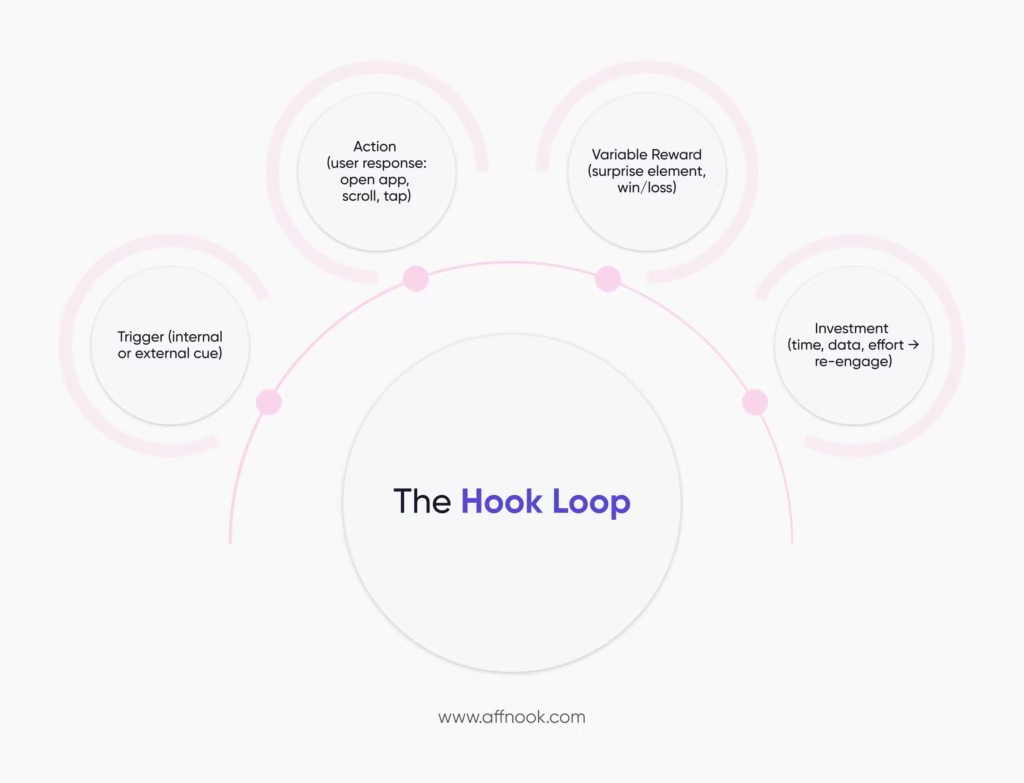
Types of Rewards
Knowing the effects of various types of reward systems on user behavior can assist you in structuring more effective user engagement strategies.
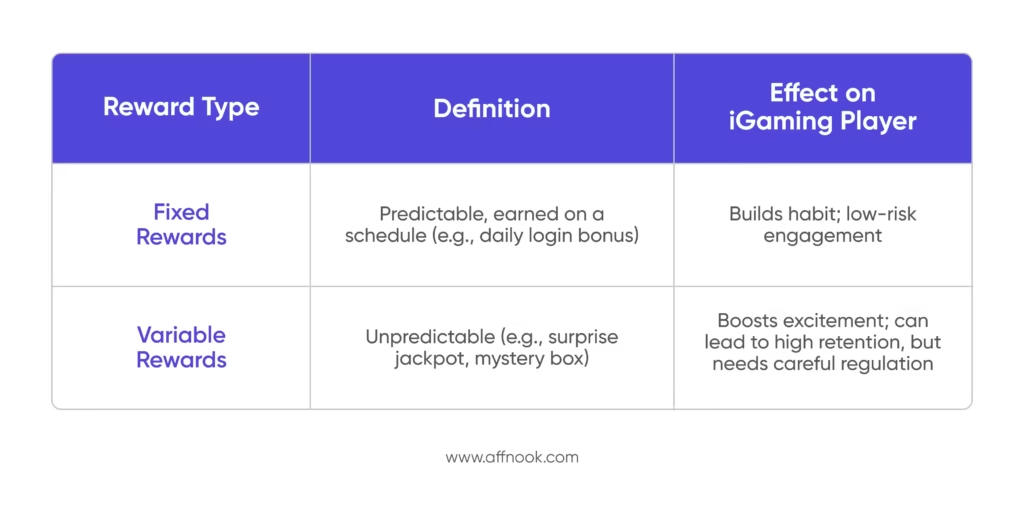
Motivational Drivers
- Extrinsic Motivation: Bonus-driven, free spins-driven, or material-based players.
- Intrinsic Motivation: Those players who are motivated by the gameplay pleasure, expertise, or advancement.
Design Caution: Variable rewards make the game more exciting, but too many of them may promote addictive behaviors, especially when used with rapid gameplay. Variable reward patterns, according to studies, are closely associated with compulsive involvement.
Operator Insight
Brands should:
- Combine both fixed and variable rewards to get a balanced experience.
- Include achievement systems to bring out intrinsic motivation.
- Construct cool-down clocks to enhance responsible playing.
The key to targeting iGaming users via game mechanics with respect to player psychology is to promote legal, ethical integrity, and player loyalty.
Cognitive Biases & Player Decision-Making
The world of online gaming is a very fast-paced industry, with more iGaming players relying on instinct as opposed to logic. This prompts judgments based on cognitive biases, which are mental shortcuts the brain has to make to simplify decisions, particularly with some emotion.
These prejudices influence the way the players gamble, the durations they gamble, and the risks they incur. Knowing how they think assists the brands and operators in creating a more favorable environment where they can engage in responsible gaming.
Key Cognitive Biases That Influence iGaming Users
- Gambler’s Fallacy: Players are convinced that when they lose several games, a victory is soon to follow. This poor reasoning drives them to keep gambling in the hope that bad luck will even out.
Operator Tip: To curtail this, it is possible to introduce a widget that identifies sustained losses. And when it reaches some limit (let it be 5 losses in a row), trigger a cool-down period or remind you that it is random.
- Illusion of Control: iGaming players are made to believe that they have some control over anything that is purely random, like they believe their timing or decision affects the slot result. This enhances confidence and risk-taking, though real control is not present.
Operator Tip: Maintain game mechanics at a high level of transparency. Insert a tool-tip or pop-up explanation to briefly explain when games of chance are involved, commonly slots or similar products.
- Recency Effect: The players pay more attention to recent experiences, especially a huge win or loss, and they allow this emotional memory to affect future bets. They might bet more under the assumption that they are winning, or bet to recoup past consecutive losses.
Operator Tip: Strike a balance between the session narrative and neutral prompts or reflective stats. As an example, instead of displaying recent losses or wins, demonstrate a session trends recap to avoid making emotional decisions.
Behavioral Segments: Casual, Engaged, At-Risk
Not all iGaming players are alike. Some log in to have a brief thrill, others to accumulate loyalty points, and some even engage in risky playing. Segmenting players by behavior enables brands and operators to develop focused, responsible, and ROI-based engagement strategies.
The 3 Core Segments
Casual Players
- Occasional log in, frequently on mobile devices
- Inspired by fun, novelty, and light entertainment
- Respond to bonuses, seasonal promotions, and easy-to-play games most effectively
Engaged Players
- Play frequently, in a variety of games
- Driven by improvement, ability, and the prospects of the future
- Get retained better with loyalty programs, progress bars, and VIP clubs
At-Risk Players
- Exhibit compulsive behavior (e.g., late-night play, more deposits)
- Being driven by an emotional trigger or a loss chasing
- Monitoring tools, restricted settings, and responsible gambling nudges are required
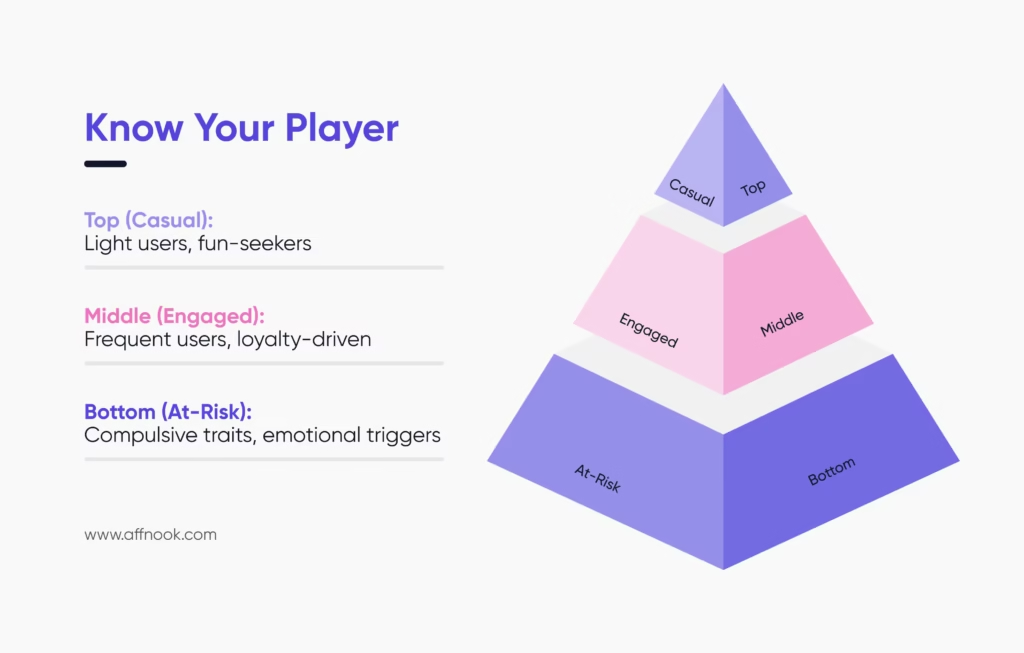
Self-Determination Theory (SDT) in iGaming Design
Self-determination theory (SDT) understands that competence (feeling skilled), autonomy (sense of control), and relatedness (social connection) influence the way each player handles games.
Operator Tip: The use of segmented campaigns results in smarter strategies. Use behavioral data (frequency, spend, length of session) to provide what every iGaming player really needs, without stepping over an ethical trigger.
Designing for Player Psychology: Brand & Product Implications
Learning about the psychological driving forces that guide the acts of an iGaming user is not only informative, but it is also the most important factor in the development of engaging and morally acceptable experiences. Creating games and platforms that adhere to these mental models can assist brands in providing superior experiences as they encourage responsible engagement.
Map Game Types to Player Motivations
In order to align your game offering with fundamental motivations, it is possible to divide players based on behavioral data obtained post-onboarding. Automation tools may be used after the players spend some time on the platform, and this data could be processed and categorized into major player types.
With that segmentation, you can then suggest the most recommended game types either within their sidebar or through targeted reengagement campaigns.
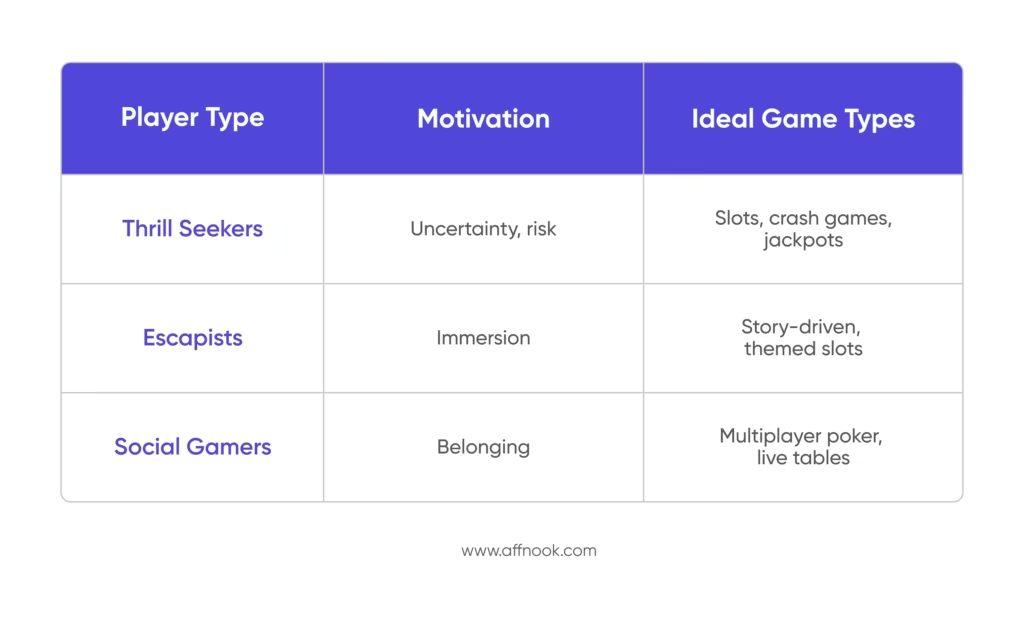
UX/UI Design Triggers That Influence Behavior
- Reward Animations – Release dopamine
- Colors & Sounds – Mood and Length of session
- Progress Bars – Encourage Action and Persistence
Designs must be engaging, but not overstimulating. Visual stimuli (such as glowing bonuses) or audio loops (such as coin jingles) can have subconscious effects on the duration of a given session of iGaming players.
Bonus Design for Retention
- Onboarding Bonuses – Activate occasional users
- Loyalty Ladders and Missions – Maintain a base of long, engaged gamers
Such mechanisms utilize the idea of variable reinforcement, a psychological concept according to which unpredictable rewards (e.g., mystery bonuses) motivate repeat behavior.
Data-Backed Personalization
Gameplay data should be examined by the brands to segment players into engagement classes and motives. By dividing the players of iGaming into behavioral personas, one could have a dynamic game environment, personal and specific notifications, and some retention strategy—without venturing into unethical territory.
Ethical Engagement & Responsible Play
To any iGaming brand or operator, success is no longer a matter of attracting players, but instead maintaining them responsibly in the long term. The ethical involvement will make the iGaming player feel secure, in control, and respected during the journey.
Once the players believe that your platform is trustworthy, they will come back again, and not only to have fun, but also because they feel safe not to be taken advantage of.
The modern iGaming user is becoming more informed about the dangers related to online gaming. This has led regulators worldwide, such as the UK Gambling Commission (UKGC) and Malta Gaming Authority (MGA), to require operators to incorporate transparency and player protection into their systems. Ethical engagement can no longer be viewed as an added value—It is a compliance matter.
Features Every Platform Should Embed
- Session Time Reminders
These nudges enable players to monitor time spent playing. Trivial alerts on 30 or 60-minute intervals may remind players to take a pause and think about what they are doing.
- Deposit and Budget Limit Tools
Enable betting limits for iGaming users to cap their daily, weekly, or monthly expenditure. This makes them have control and avoids spontaneous overspending.
- “Take a Break” and Self-Exclusion Options
One-click buttons that enable players to suspend playing or self-ban for a desired time. This promotes being responsible without judgment.
- Reality Checks
Regular pop-up messages with win/loss statistics, session time, and net spend provide an objective overview, keeping the players attentive and realistic.
Why It Matters
Neglect of responsible play is not merely a reputational risk, but something that can lead to high fines or even suspension of licenses. Predatory mechanics, dark UX, or deceptive offers are all now being examined. Ethical design is beneficial to your brand and your players.
Better yet, by integrating these tools into your player experience, you will not only be conforming to rules and regulations; you will be gaining the loyalty of the contemporary, informed iGaming user.
Conclusion
An insight into the psychological profile of the iGaming player is not only helpful, but it is a competitive advantage. When so many platforms strive to attract the same players through the same bonuses and games, the platform that knows its players best wins.
Players are complex individuals, and their motivation, retention, and reactivation are difficult to decipher. Answering this enables brands and operators to look beyond the topical data and get to the heart of the problem so that insight-driven learning can take place.
In this guide, we discussed the role of moods such as excitement, escape, and social reward in shaping the behavior of a player. We examined how game design worked, incentive qualities, thinking errors, and ethical participation. All these influence the experience that a player will have with your platform, and they start from the initial click to the last gaming session.
Using such insights, brands and operators have the opportunity to optimize:
- Game design (to increase participation without exploiting it)
- Marketing messages (which resonate with the mind of a player)
- Loyalty plans (that are intimate, rather than pushy)
- Tools to limit risk (which promote responsible play)
Platforms such as Affnook are vital to connecting insights and action. Affnook empowers brands and operators in the iGaming affiliate marketing sector to turn their behavioral insights into more intelligent campaigns and provide high-quality traffic, optimize churn, and provide sustainable player value.
Help Section
1. What motivates an iGaming player to choose one online casino over another?
Players prioritize factors like game variety, ease of payment, trust signals (like licensing), mobile experience, and personalized offers when choosing between platforms.
2. How do iGaming player behaviors differ across regulated markets like the UK, Germany, or Ontario?
Regulated markets influence player behavior through deposit limits, bonus restrictions, and advertising norms—driving more cautious and compliance-aware gameplay patterns.
3. What data points help operators build accurate iGaming player profiles?
Key data includes session length, preferred games, deposit frequency, device usage, and interaction with bonuses—crucial for targeting and retention strategies.
4. How can operators identify and retain high-value iGaming players?
Operators use predictive analytics, segmentation, and behavioral scoring to identify VIPs and deploy loyalty programs, exclusive rewards, and early access to retain them.
5. Why is understanding the iGaming player journey important for conversion and retention?
Mapping the player journey—from acquisition to gameplay to churn—helps operators personalize experiences, reduce friction, and boost lifetime value across markets.
